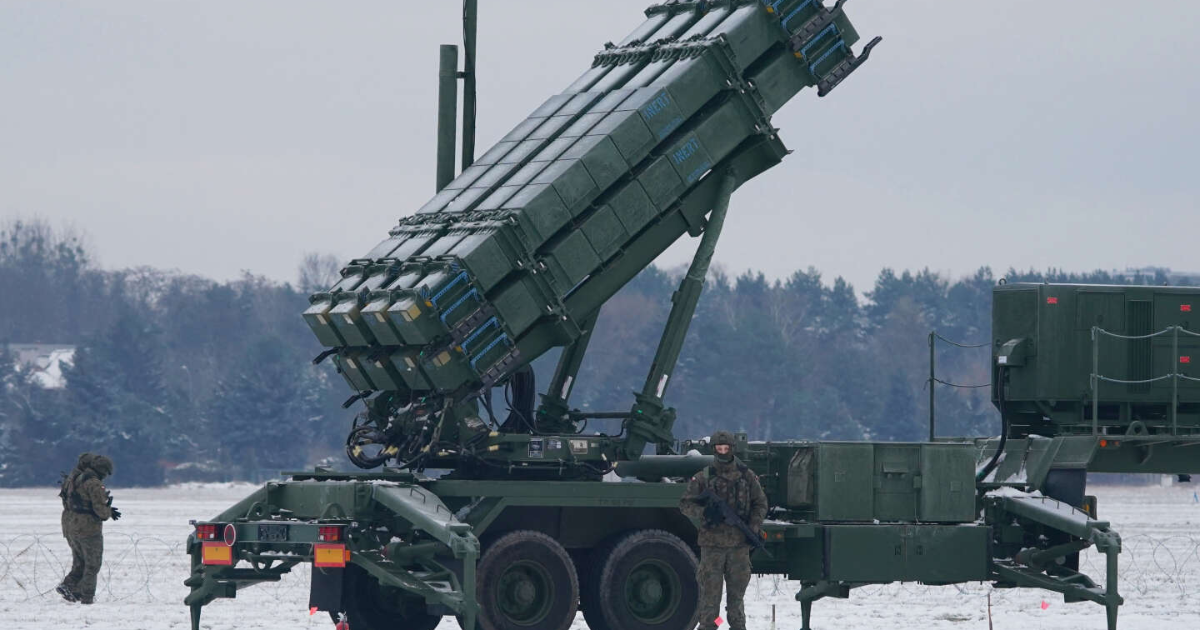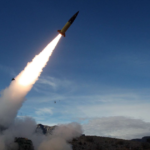What is Patriot Missiles?
Patriot missiles represent the pinnacle of the U.S. Army’s prowess in air and missile defense systems, showcasing advanced capabilities tailored to neutralize both high-performance aircraft and tactical ballistic missiles. This sophisticated defense mechanism comprises a comprehensive array of components, including a phased array radar, an engagement control station, intricate computer systems, robust power generating equipment, and a formidable arsenal of up to eight launchers. Each launcher is equipped to house four meticulously prepared missiles, poised for rapid deployment at a moment’s notice.
Brief History of Patriot Missiles
The MIM-104 Patriot, standing as the cornerstone of the U.S. Army’s air and missile defense capabilities, was originally conceptualized as an antiaircraft system. However, its evolution has been marked by a significant expansion to encompass formidable missile defense functionalities. The inaugural baptism of Patriot in combat occurred on the battlefields of Saudi Arabia and Israel during Operation Desert Storm, cementing its reputation as a reliable guardian against aerial threats.
At the heart of the Patriot system is the PAC-2 missile, measuring 5.8 meters in length, boasting a weight of approximately 900 kilograms, and propelled by a solid-fueled rocket motor. This iteration of the missile represented a crucial advancement in the system’s defensive capabilities. Subsequently, the PAC-3 missile emerged as the latest evolution of the Patriot missile family. Engineered with enhanced capabilities, the PAC-3 is specifically designed to intercept a spectrum of threats, including tactical ballistic missiles, cruise missiles, and airborne threats, solidifying its role as a versatile and adaptive defender on the modern battlefield.
Historical Development of Patriot Missiles
Origins and Early Designs:
- In 1976, the concept of the Patriot missile system was conceived with the objective of enhancing and refining existing air defense systems. This initiative aimed to address the evolving challenges posed by airborne threats and lay the groundwork for a more robust defense mechanism.
- The SAM-D (Surface-to-Air Missile Development) project, which laid the foundation for the Patriot system, entered engineering development on February 19, 1976. Subsequently, it underwent a nomenclature transformation and was renamed PATRIOT, signifying its mission as a “Phased Array Tracking Radar to Intercept On Target” system.
- The momentum behind Patriot gained significant traction as it transitioned from development to production. In September 1980, Patriot entered full-rate production, marking a critical milestone in the realization of an advanced air defense solution. The Army, recognizing the strategic importance of this system, activated its inaugural Patriot missile battalion in May 1982, symbolizing the operational commencement of this revolutionary defense technology.
Key Milestones in Patriot Missile Development:
- As the Patriot system matured, key milestones in its development during the mid-to-late 1980s solidified its standing as a versatile defense platform. Notably, the Army introduced a modified version known as Patriot ATM (Advanced Targeting Missile). This adaptation was specifically designed to counter the emerging threat posed by cruise and air-to-surface missiles, showcasing the system’s adaptability to evolving challenges.
- The evolution of Patriot continued with the introduction of different versions, each representing advancements in technology and capabilities. The PAC-1 version incorporated critical software changes, while the PAC-2 version introduced hardware modifications, a new fuse, and a warhead with larger fragments. These enhancements were integral to refining the system’s precision and expanding its effectiveness against a diverse array of threats.
- The baptism by fire for Patriot came during the Persian Gulf War in early 1991, where the Patriot ATM played a pivotal role in defending cities and critical sites in Saudi Arabia against incoming threats. The system’s success in countering Iraqi Scud missiles garnered attention and, at times, conflicting claims about its efficacy. Nevertheless, the public record revealed a congressional consensus advocating for the early deployment of an effective tactical ballistic missile defense system. This marked a turning point in Patriot’s journey, elevating its status as a key player in modern air defense strategies.
The Key Components and Functionality of Patriot Missiles
Overview of Patriot Missile System
The MIM-104 Patriot stands as the backbone of the U.S. Army’s air and missile defense capabilities, originally conceived as an antiaircraft system. Over time, it has undergone significant adaptations to meet the evolving demands of the defense landscape. Beyond its initial purpose, the Patriot system has emerged as a formidable defense against a spectrum of threats, including missiles, drones, and various aircraft. Widely adopted by multiple nations, the Patriot’s continuous evolution reflects its commitment to staying at the forefront of technological advancements in defense.
Components of Patriot Missile System
The intricate Patriot missile defense system comprises six critical components, each playing a distinctive role in ensuring its effectiveness:
Missile: The core element of the system, responsible for intercepting and neutralizing incoming threats.
Launcher: A platform designed to deploy and launch the Patriot missiles with precision.
Radar set: This component is integral for surveillance, tracking, and identifying potential targets, providing crucial data for interception.
Control station: Serving as the nerve center of the system, the control station orchestrates the coordination and execution of defense operations.
Power generator unit: An essential component providing the necessary energy to sustain the system’s operations.
High-frequency antenna mast: Facilitating communication and information exchange, this mast ensures seamless connectivity within the Patriot system.
A comprehensive Patriot battery comprises three additional components:
Power plant: Consisting of two vehicle-mounted 150-kilowatt generators, the power plant supplies the energy required for sustained operations.
Radar set: This component enhances the system’s detection capabilities, contributing to a robust and adaptive defense infrastructure.
Engagement control: Playing a pivotal role in decision-making, the engagement control component enables precise and timely responses to potential threats.
How Patriot Missiles Work:
Patriot missiles are sophisticated surface-to-air defense systems designed explicitly to intercept a variety of threats, including missiles, drones, and aircraft. Employing a combination of ground-based radar and advanced fire control computers, Patriot missiles utilize hit-to-kill technology. This approach aims to eliminate targets through direct impact, guided by radar data and onboard flight control systems.
The Patriot missile system’s operational process involves ground-based radar surveillance, target tracking, and engagement from distances as far as 50 miles. Tailored to intercept tactical ballistic missiles, cruise missiles, and aircraft, the Patriot system represents a versatile and robust defense mechanism against a broad range of airborne threats.
Operational Capabilities and Uses of Patriot Missiles
Defensive Capabilities of Patriot Missiles
- Patriot missiles stand as a formidable line of defense, equipped with the advanced capability to intercept a diverse range of threats. Among their primary targets are high-performance aircraft, tactical ballistic missiles, cruise missiles, and even loitering munitions. This versatility is made possible through a sophisticated combination of radar technology and complex fire control computers.
- At the heart of the Patriot system is its cutting-edge hit-to-kill technology, an approach that prioritizes the destruction of incoming threats through precise, direct impact. This methodology relies on guided radar systems and onboard flight control systems, ensuring a high level of accuracy in engaging and neutralizing hostile elements. The ability to effectively engage a variety of threats distinguishes Patriot missiles as a multi-faceted and adaptive defense system.
Anti-Aircraft and Anti-Missile Uses
- Originally conceived to counter high-performance aircraft, Patriot missiles have evolved to meet the changing landscape of modern warfare. In response to emerging threats, the U.S. Army developed a modified iteration of the Patriot system known as Patriot ATM (Advanced Targeting Missile). This adaptation expanded the system’s capabilities to defend against cruise missiles and air-to-surface threats, reflecting the dynamic nature of contemporary conflicts.
- The Patriot’s dual-purpose functionality, capable of thwarting both airborne and missile-based threats, positions it as a pivotal asset in the realm of air defense. This adaptability underscores the ongoing efforts to enhance the system’s effectiveness against an array of potential adversaries.
Patriot Missiles in International Conflicts
- The battlefield legacy of Patriot missiles extends across major international conflicts, demonstrating their pivotal role in safeguarding nations. Notable instances include their deployment during the Gulf War, Iraq War, and the Syrian Civil War. The Patriot system’s effectiveness has garnered international recognition, leading to its adoption by 18 countries, including prominent allies such as Germany, the Netherlands, and Saudi Arabia.
- During the Persian Gulf War in the early months of 1991 , Patriot missiles played a crucial role in defending cities and strategic sites in Saudi Arabia. The success of the PATRIOT system against Iraqi Scud missiles led to debates and conflicting claims regarding which nations supported its deployment and which opposed it. This chapter in the Patriot missile’s history underscores its impact on the geopolitical stage, shaping discussions surrounding defense strategies and international alliances.
Effectiveness and Success Stories of Patriot Missiles
Notable Successful Interceptions
- The Patriot missile system has earned recognition for its notable successes, particularly during the Gulf War when it played a pivotal role in the defense of Saudi Arabia and Israel. Initially, the U.S. Army asserted an impressive 80% success rate for the Patriot system in Saudi Arabia and a respectable 50% success rate in Israel. However, subsequent assessments led to revised figures, scaling back the claimed success rates to 70% and 40%, respectively. The discrepancy in these figures underscores the complexities and challenges associated with evaluating the efficacy of missile defense systems in real-world scenarios.
- In the U.S.-led invasion of Iraq in 2003, the Patriot missile system once again demonstrated its effectiveness. Comprehensive studies conducted post-conflict concluded that the Patriot Advanced Capability-3 (PAC-3) missiles, a more advanced version of the system, performed admirably by successfully intercepting and neutralizing incoming threats. These successes bolstered the reputation of the Patriot system as a reliable defense mechanism in modern warfare
Patriot Missile Performance in Real-Life Scenarios
- Despite the commendable success rates in the Gulf War and the subsequent invasion of Iraq, controversies emerged regarding the Patriot missile system’s overall performance, particularly during the earlier conflict. One significant concern centered around the PAC-2’s 90kg blast-fragmentation warhead, which, on occasion, failed to fully destroy incoming missiles. This raised questions about the system’s ability to consistently neutralize advanced threats in dynamic combat situations.
- In the early 1990s, as the U.S. Army faced scrutiny over Patriot’s performance, an internal examination was hindered by challenges such as the classification of information and the need for additional data. An independent assessment of Patriot’s effectiveness was not conducted at that time, leaving room for speculation and differing interpretations of the system’s true capabilities.
- The demand for both PAC-2 and PAC-3 systems surged during the U.S.-led invasion of Iraq in 2003. Unlike the Gulf War, where uncertainties lingered, subsequent studies affirmed that the Patriot deployments in 2003 were largely effective. These findings provided a nuanced perspective on the system’s performance, illustrating its adaptability and improvement over time in response to evolving threats on the battlefield.
Challenges and Limitations of Patriot Missiles
Technical Challenges and Limitations
- The Patriot missile system, a key component of modern air defense, has encountered a series of technical challenges and limitations that have raised questions about its efficacy. One notable concern is the vulnerability of the system when engaging Patriot Scud missiles, which has the potential to inflict damage on the very system designed to neutralize such threats. This vulnerability poses a significant obstacle, as the Patriot missile system is often deployed in scenarios where rapid and accurate responses are imperative.
- A critical aspect contributing to the challenges is the system’s reliance on precise data collection and analysis. The Patriot’s performance during the Gulf War, initially hailed as exemplary, underwent subsequent revision, revealing a more nuanced reality. Contrary to the initial claim of intercepting 45 out of 47 Scud missiles, the revised assessment pegged the system’s success rate at around 50%. Even within this adjusted figure, the U.S. Army expressed “higher” confidence in only about one-quarter of the cases.
Criticisms and Controversies Surrounding Patriot Missiles
- The Patriot missile system has not been immune to criticisms and controversies, particularly stemming from its performance during the 1991 Gulf War. The public narrative portrayed the Patriot as a near-perfect defense, successfully intercepting the majority of incoming Scud missiles. However, subsequent revisions by the U.S. Army painted a less optimistic picture, indicating a less favorable success rate of around 50%.
- Moreover, doubts have been cast on the system’s effectiveness in certain geopolitical contexts. For instance, during the conflict involving Houthi missiles in Saudi Arabia, there is a notable absence of evidence supporting successful interceptions by the Patriot system. This absence raises fundamental questions about the reliability and overall effectiveness of the Patriot missile system in diverse and evolving threat scenarios.
- A specific concern arises from the deployment of the Patriot Advanced Capability-2 (PAC-2) system in Saudi Arabia. While designed for air defense, this variant is notably ill-equipped for intercepting long-range missiles such as the Burkan-2, which can cover approximately 600 miles. Compounded by the missile’s ability to separate its warhead during flight, the limitations of the PAC-2 variant become apparent in scenarios involving more sophisticated and extended-range threats.
Future Developments and Upgrades in Patriot Missile Technology
Ongoing Research and Development Efforts
- The Patriot missile system, a cornerstone of modern air defense, has consistently adapted to the dynamic landscape of technology and evolving defense requirements. Boeing, a key player in the development and enhancement of the Patriot system, has recently unveiled plans to expand its production capacity for the sensors crucial in guiding Patriot missiles. This expansion initiative is anticipated to become operational by early 2027, signifying a commitment to bolstering the technological backbone of the Patriot missile system.
Promising Upgrades and Advancements in Patriot Missiles
- In the pursuit of heightened effectiveness and precision, the Patriot missile system has undergone successive upgrades, particularly in the realm of Patriot Advanced Capability-2 (PAC-2) missiles and radar technology. These advancements have contributed to substantial improvements in overall system performance, ensuring its continued relevance in contemporary defense scenarios.
- The evolution of the Patriot missile system is evident in its transformation from the original deployment in 1983 to the sophisticated and highly adaptable configuration seen today. Over the years, the system has undergone multiple upgrades, with each iteration addressing the diverse needs of nations relying on its capabilities. Notably, the Patriot Advanced Capability-1 (PAC-1) and PAC-2 standards have played pivotal roles in shaping the system into a formidable defense mechanism.
- One notable feature of the modern Patriot system is the introduction of a new interceptor equipped with hit-to-kill technology. This innovative approach aims to enhance the system’s precision by directly striking and neutralizing targets. The integration of hit-to-kill technology reflects a strategic shift toward more efficient and precise interception methods, marking a significant milestone in the ongoing development of the Patriot missile system.
Conclusion:
In conclusion, the Patriot missile system, originating as an antiaircraft defense, has transformed into a versatile guardian against a spectrum of threats. Despite controversies and limitations, its battlefield successes in major conflicts highlight its undeniable impact. The system’s adaptability, seen in iterations like PAC-1, PAC-2, and PAC-3, underscores a commitment to evolving defense needs. Looking ahead, Boeing’s expansion plans and the integration of hit-to-kill technology signify a dedicated push for precision and efficiency. The Patriot missile system stands at the nexus of history, resilience, and continuous innovation, poised to navigate the complexities of modern defense and secure nations in an ever-evolving global landscape.
FAQ
1. How effective are Patriot Missiles in intercepting incoming threats?
Patriot Missiles have demonstrated a high level of effectiveness in intercepting and destroying incoming aircraft and ballistic missiles. Their success rate varies depending on factors such as the type of threat, engagement range, and countermeasures employed by the enemy. However, the Patriot Missile system has proven itself in numerous real-life scenarios and continues to evolve to effectively counter emerging threats.
2. Can Patriot Missiles be used against non-military targets, such as drones?
Yes, Patriot Missiles can be utilized to intercept and neutralize non-military threats, including unmanned aerial vehicles (UAVs) and drones. The system’s adaptability and versatility allow it to respond to a wide range of airborne threats, making it an effective defense solution against both military and non-military targets.
3. What are some of the limitations of Patriot Missiles?
While Patriot Missiles are highly advanced, they do have limitations. One limitation is the range of the system, as it is designed primarily for mid-to-long-range engagements. Additionally, the system can be vulnerable to countermeasures employed by the enemy, such as electronic jamming. Ongoing research and development efforts aim to address these limitations and enhance the capabilities of Patriot Missiles for future operations.
4. Are there plans for further advancements in Patriot Missile technology?
Yes, there are continuous research and development efforts dedicated to advancing Patriot Missile technology. These efforts aim to improve system performance, enhance interception capabilities, increase engagement ranges, and develop countermeasures against emerging threats. The development of more advanced sensors, improved software algorithms, and increased integration with other defense systems are among the areas being explored to enhance the effectiveness of Patriot Missiles in the future.






